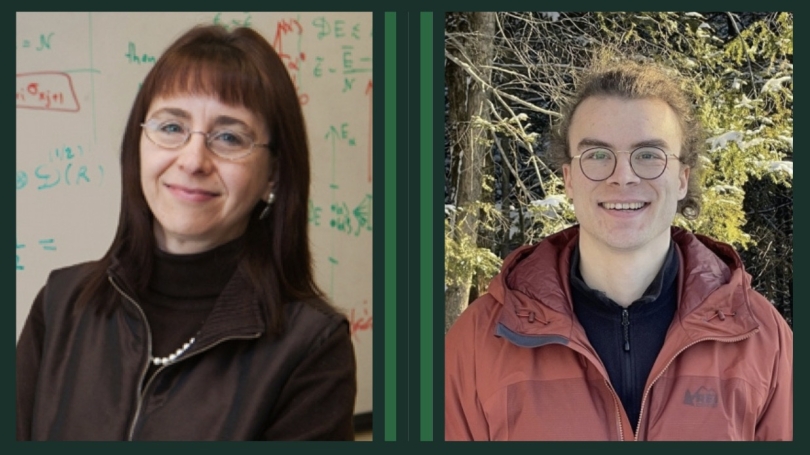
- Undergraduate
- Graduate
- Foreign Study
- Research
- Inclusivity
- News & Events
- People
Back to Top Nav
Back to Top Nav
Back to Top Nav
Back to Top Nav
Back to Top Nav
Dartmouth professor Lorenza Viola and postdoc Michiel Burgelman have published new quantum error modeling research, 'Limitations to Dynamical Error Suppression and Gate-Error Virtualization from Temporally Correlated Nonclassical Noise' in the Physical Review X Quantum journal.
The February 2025 online issue of Physical Review X Quantum (Vol.6, No.1) features new theory work by Dartmouth Professor Lorenza Viola and Dartmouth postdoc Michiel Burgelman. Burgelman, the paper's first author, and Viola, senior author of the study, have challenged a standard assumption made in modeling the noise affecting a quantum computer. Their research indicates an established method for reducing noise below a desired threshold is potentially less effective than commonly assumed.
In current-day quantum computing devices, information stored in quantum bits (qubits) is continuously being corrupted as the qubits interact with their environment. This corruption is also known as noise. In a typical scenario where the noise is sufficiently correlated in time, a method known as Dynamical Error Suppression (DES) is commonly used to reduce the noise strength. The resulting DES-protected qubits are then combined to further encode information, and every few logical operations (gates), errors are prevented from compounding via Quantum Error Correction (QEC).
This "layered" approach has traditionally predicted reliable quantum computation under the assumption that the environment is "classical" (meaning that it is not considerably affected by its interaction with the qubits) and therefore the environment's state stays constant in time. In this way, one can ultimately define a constant unit of error per operation performed on the system, known as the error-per-gate.
Putting these assumptions to the test, Burgelman and Viola modeled a single qubit coupled to a dephasing quantum environment and undergoing an idealized DES-protected computation. In addition, QEC is mimicked by perfect reset operations on the qubit, which cuts off system-side error propagation entirely. Thus error propagation is necessarily due to the evolution of the quantum environment itself.
Through their research, Burgelman and Viola show that the error-per-gate metric can fluctuate widely for realistic noise, and in a way that depends on past operations. Their work proves that the intrinsically quantum nature of the environment can have a significant impact on the DES being enacted on the system. The paper's results constrain the validity of the assumption that the error-per-gate would be constant in realistic quantum devices, with implications for developing fault-tolerant quantum computers.
While systems of a larger, more representative size still remain to be analyzed, Burgelman and Viola are excited to raise attention to this fundamental issue within their community.
You can read their publication in PRX Quantum here